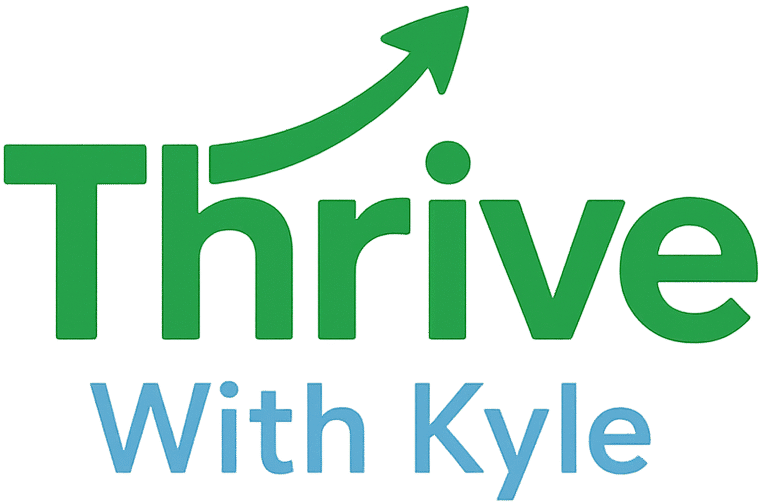Content marketing feels a bit like learning a new instrument; the basics come first, and you build from there. For beginners, the world of content marketing might seem a little overwhelming, but you don’t need to worry about fancy strategies or tools right from the start.
Here, I’m breaking down three simple content marketing strategies that work great for anyone just starting out. These approaches help you gain traction, grow your audience, and start seeing results without the stress of advanced planning or big budgets.

Why Simple Content Marketing Strategies Work for Beginners,
Jumping straight into complex marketing tactics can sometimes leave you stuck before you’ve really started. Simple strategies make it easier to see progress quickly, which boosts your confidence and gives you room to experiment.
When you keep things straightforward, it’s easier to spot what works and build on your wins. Just remember that.
A recent study shows that small businesses and solo creators are turning more to content marketing every year. Part of this growth is because simple tactics build consistency. With consistency comes trust and audience growth. If you keep chipping away, your reach expands naturally over time.
Not only do simple strategies reduce stress, but they also act as stepping stones for more complex initiatives in the future. By focusing on core elements early, you lay the groundwork for success and are better equipped when it’s time to branch out or add more advanced approaches later.
Strategy 1: Start With Value-Driven Blog Content
If there’s one area that helps the most at the beginning, it’s valuable blog content. Creating clear, helpful blog posts puts your expertise on display, helping anyone who lands on your site get something useful right away.
When I first started sharing blog content, I focused on answering basic questions people asked in my niche. I wrote simple tutorials, short “how-to” guides, and personal stories about solving common problems. Not only did these posts help others, but they built up my confidence as a creator.
- Consistency: Pick a regular schedule, like one post per week. This keeps your site fresh and builds audience expectations.
- Answer Common Questions: Think about what your target audience might search for, such as “How do I design a logo for free?” or “Ways to promote a new blog.”
- Stay Practical: Step-by-step instructions and tool recommendations go a long way. Keep it direct, and use plain language that anyone can follow.
My go-to resource to smooth the way for blog creation is Wealthy Affiliate. Their SiteContent AI, Design, and AI Author platforms let you plan, draft, and even optimize content, so you’re not staring down a blank screen for hours. A conundrum we ALL face.
When you have an AI tool-kit that can help you produce the BULK of the content (and across any niche), it really allows you to focus on the editing, polishing and refinement of your content…which makes what used to be a time-consuming process much easier. Their AI Authors feature is especially handy if you want quick drafts or help expanding your ideas.
Strategy 2: Make Use of Social Media Micro-conteContentnt
While blog posts are great for in-depth info, small, snackable social posts crank up your reach and boost engagement. Beginners often overlook quick content types like short tips, infographics, or quick stories, but these are super helpful for growing a following without heavy lifting.
I started with simple text posts on platforms like Instagram and Facebook, sharing a single actionable tip or a personal anecdote about creating content. Video snippets work well too; a 30-second summary or behind-the-scenes peek draws people in and feels personal.
- Pick 1 or 2 Platforms: Don’t spread yourself thin. Go where your target group hangs out most. I find that Facebook and X are the best for engagement personally, and if you have a “visual” niche, Pinterest can be a winner.
- Repurpose Content: Chop a blog post into a few quick tips or turn stats into images for easy sharing.
- Use Tools for Scheduling: Tools like Buffer or Hootsuite make posting daily less of a hassle. These can be really helpful, but also remember that anything you share has to be engaging. So don’t just dump links and boring content or you won’t see decent results.
If finding images and copy ideas holds you back, Wealthy Affiliate’s built-in imagery and content suggestion features really cut down the busywork. I’ve batch-created weeks’ worth of posts using their tools, and it saves so much energy and time. You can manage your blog and social posts from the same platform, making the whole workflow a breeze.
Strategy 3: Build and Nurture an Email List Early
It might sound old school, but collecting email addresses from day one gives you direct access to your audience; plus, you’re not at the mercy of social algorithms. Even with a tiny list, regular emails make a big impact.
- Simple Signup: Use a straightforward sign up form on your homepage or within blog posts. Offering a small freebie, like a checklist or short guide, increases signups.
- Send Valuable Updates: Email out your newest blog content, share a helpful tip, or point to cool resources you’ve found.
- Stay Consistent: A short weekly or biweekly newsletter keeps you on your readers’ radar.
Even with zero design or coding skills, there are tools like MailerLite and ConvertKit that connect easily with your website or blog. If you use Wealthy Affiliate, website integration and setup tutorials are included, which helps avoid the usual setup confusion and gets you started faster.
Common Challenges for Content Marketing Beginners
When you first start content marketing, you’ll probably bump into a few roadblocks. Here are three biggies I see over and over, along with what’s helped me:
- Writer’s Block: Running out of ideas or feeling stuck is normal. Using content prompts in SiteContent AI takes away the pressure by giving you a starting point or even a whole outline.
- Finding the Right Keywords: SEO can be tricky, but Wealthy Affiliate’s Jaaxy Research platform is simple for beginners. It shows low competition keywords you can actually rank for with a new site.
- Feeling Overwhelmed: There’s a lot of advice out there. I stick to a single, easy-to-follow system and tune out the noise. A to-do checklist or simple editorial calendar helps a ton.
You don’t have to face these challenges alone. There’s an active community at Wealthy Affiliate where other creators share their progress, answer newbie questions, and offer support when you hit a snag.
Another challenge is keeping up with feedback and comments. Don’t let this stress you out; responding to a few messages a week helps build relationships without overwhelming your schedule.
Tips to Make Content Marketing Easier (and More Fun)
Every time I felt stuck, these steps helped get things moving again:
Batch Your Work: Set aside a focused time slot each week to brainstorm, draft, or schedule posts and emails in a batch. That way, content creation doesn’t take over your whole week and you can stay on top of your other priorities.
Mix Personal Stories: Don’t be afraid to share personal wins, struggles, or experiments. Readers relate to real stories, not just polished tutorials.
Automate When Possible: Simple automations like post scheduling, email drips, or using AIpowered first drafts give you more time for the creative side. Tools like SiteContent AI and AI Authors in Wealthy Affiliate seriously give a boost to productivity.
Every bit you automate or batch gives more time to connect with your audience and improve your content. Try mixing up your approach occasionally to keep things fresh and fun.
How Wealthy Affiliate Helps Streamline Content Creation
When getting started, it’s easy to get bogged down by piecing together different tools. At Wealthy Affiliate, you get an all-in-one suite of tools built specifically for creators and affiliate marketers:
- SiteContent AI: Write, edit, and make your posts pop in one spot; enjoy built-in grammar and SEO suggestions.
- AI Authors: Get quick first drafts, outlines, and even image suggestions for any topic. This one’s a real timesaver if you want content in bulk or need starter ideas.
- Built-in Training: Step-by-step guides and a community that actually answers your questions.
I started there because it covers all the basics—content planning, writing, SEO research, website hosting, and more. Even as a beginner, you have every core tool in one spot with a pretty flat learning curve.
You also get access to resource libraries and regular webinars, so you’re constantly learning new tricks as you grow. The platform makes it easy to scale up your efforts as you become more confident.
Real-World Applications for Simple Content Marketing
Once your first few pieces go live, you’ll start noticing patterns; certain types of content get more clicks, shares, or email replies. I paid attention and doubled down on what worked. After a few tweaks, even my smallest blog posts started pulling in a steady trickle of new visitors.
- Blogging for Affiliate Earnings: A beginner friendly blog can highlight useful resources or products with affiliate links and earn you side income over time.
- Building an Online Brand: Regular content shapes your personal brand, making you a go-to resource in your space. This can lead to partnerships, guest posting opportunities, and invitations to webinars or podcasts as your credibility grows.
- Helping Others: Simple tutorials and resource lists give real help; every bit of value you share builds trust and goodwill. You build a positive reputation in your niche and become someone people turn to for answers. Remember, if you can help people, you can succeed online in ANY niche.
The technology today, especially with things like SiteContent AI and bulk imagery creation, means you don’t need a fancy setup or expensive marketing team to start making a difference. With these tools and a reliable process, beginners can compete with more established sites and even catch up faster than before.
Frequently Asked Questions.
Question: How often should a beginner post new content?
Answer: Once a week is a solid starting point. Consistency matters more than speed. Pick a rhythm you can stick to and grow from there. Avoid publishing low quality content, you want to make sure that you have your personal signature behind content.
Question: Do I need to use AI tools to start content marketing?
Answer: Not required, but AI tools like those at Wealthy Affiliate remove a lot of guesswork and help you move faster, especially when you’re learning the ropes. They’re optional, but they can save you time and frustration and using a “tool” like AI to help you facilitate the content creation process can lead to better, more helpful content.
Question: What’s the best type of content for total beginners?
Answer: Blog posts answering specific questions and help people solve problems are ideal. You can also leverage in parallel social media tips, and simple email updates are all great starting points. If you keep it practical and focused on helping others, you’ll see progress.
Final Thoughts: Getting Started
Jumping into content marketing doesn’t have to be complicated. Focusing on valuedriven blogs, microcontent for social, and nurturing an email list gives you a solid foundation. Add in some smart tools from Wealthy Affiliate, and you’ll make life easier as you grow your skills and audience.
You can check out Wealthy Affiliate here; it is going to simplify content creation for you and you can get a jump-start with 2,000 free AI credits to help you with content/media creation within their Starter account. No matter which route you start with, simple steps keep you moving forward. Happy creating and feel free to leave any comments or questions that you may have below.



